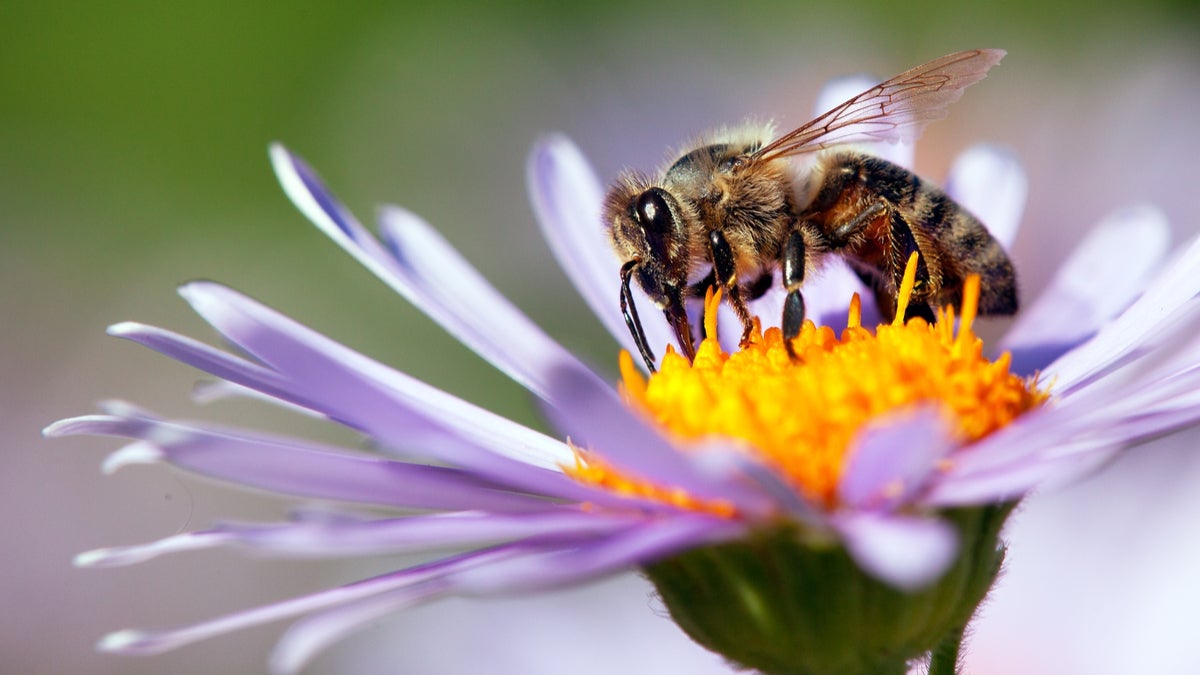Food production needs to increase by 70 per cent to feed the nine billion population projected for 2050. Fortunately, the industry is benefiting from some radical thinking. Here are the cutting edge technologies taking farming towards this goal.
Bees as micro-distributors of pesticide
Bee Vectoring Technologies is a Canadian startup which has developed a commercial alternative to spraying food crops with pesticide. This innovative new method uses bumblebees to distribute a naturally occurring, organic, inoculating fungus while carrying out their natural foraging cycle.
The BVT system makes commercially reared bumblebees through a specialist tray dispenser as they leave their hive. They brush past a powder which clings to their fur. The powder is a naturally occurring fungus named clonostachys rosea which, when absorbed by a plant, enables it to effectively block destructive diseases, such as botrytis, in strawberries.
The process has many merits. It reduces or negates the need for spraying pesticides, thus preventing chemicals entering the water supply.
In a large-scale trial in Florida it delivered comparable or improved disease protection over sprayed chemicals, as well as increasing fruit yield by between 7 and 29 per cent. This fruit was independently shown to be sweeter and had a longer shelf life.
In a recent trial on blueberries in Nova Scotia, yield increases were recorded at 77 per cent. And the bees, of course, are entirely unharmed.

Vertical farming
Vertical farming has been around for a while, but recently has begun to scale dramatically.
A new scheme based in North Lincolnshire by Jones Food Company and Current, a division of General Electric, will be the largest indoor farm in Europe, producing up to 420 tonnes of leafy greens per year across a growing area of 5,120 m² (equivalent to 26 tennis courts) arranged in racks rising to the height of 11m.
GE’s role is to install more than 12km of its Arize LED horticultural bar lights, which offer a balanced light spectrum that catalyses growth and shortens the growth cycle. The facility is housed in a clean environment, so crops are grown in isolation from contamination. This makes it ideal for the beauty and pharmaceutical industries.
It will use up to 90 per cent less water and 50 per cent less fertiliser than conventional growing methods, saving on input costs.
Food production needs to increase by 70 per cent to feed the nine billion population projected for 2050.
Radical efficiency boosters
Phytoponics is a Cardiff-based company looking to revolutionise the efficiency of commercial greenhouses. Phytoponics grows vine crops, such as peppers and tomatoes, in an inflatable bag filled with water, which is attached to a pump to filter in nutrients and aerate the water.
The grow bag is made of a flexible polymer which offers high performance, but is cheaper to transport and install than regular hydroponics systems. Founder Adam Dixon calls it a “jacuzzi in a bag”, and claims it uses 80 per cent less water than soil-based farming.
Phytoform Labs uses gene-editing technologies to reduce carbon emissions in the agriculture industry. It does this by engineering specific plant traits and characteristics and then breeding them into the plants, so that their cultivation becomes more efficient and less energy intensive.
For example, plants that have traditionally only been grown outdoors – and therefore emitted more carbon – may have their genes modified to allow them to be farmed more efficiently inside greenhouses.
Both of these innovative companies are startups, and received funding from the Shell Livewire programme, normally focused on mainstream tech.
Blockchain, the most hyped technology of our era, is seen as a potential game-changer in creating trusted and transparent supply chains
Arrival of the robot army
We all know the robots are coming to automate farming. But the extent of the progress being made may surprise farmers.
Projects such as the ‘Hands Free Hectare’ have shown that barley can be grown entirely without human interference. A PhD student at King’s College London has developed the Growbot, which lets farm workers with no technology skills program it to perform manual tasks. The project has ongoing funding from the Agriculture & Horticulture Development Board.
In the dairy industry, Universal Robots makes a robot arm able to automate labour-intensive tasks such as manually disinfecting cows’ udders before and after being milked.
Perhaps the trickiest area is fruit picking. Rosberg Green House is utilising a universal robot gripper to pick herbs and flowers. The two “fingers” of the robot gripper have built-in intelligence and advanced technology that mimics the way humans instinctively use our sense of touch when we grab things to move them. This means that the delicate produce is not harmed during this process.
Also worth mentioning are robots made by Autostix and ISO Group, which are able to take cuttings. At the current rate of progress, automated farms could be mainstream within the next five years.

Blockchain
Of course, blockchain also gets a mention. The most hyped technology of our era is seen as a potential game-changer in creating trusted and transparent supply chains, and farming could be its ideal market.
Thai Union, the world’s largest seafood producer, is partnering with blockchain specialist Eachmile to monitor production from the fishing vessel to shop floor.
There’s a clever twist to the project: Etherium-based cryptocurrency Fishcoin is used to incentivise accurate reporting. Workers can be rewarded for correct practices with Fishcoin, and made accountable for issues.
It’s early days for blockchain in the supply chain, but with the Chinese government alone investing more than $3 billion since 2016, there’s no doubting its potential to the future of farming across the globe.
Bees as micro-distributors of pesticide

